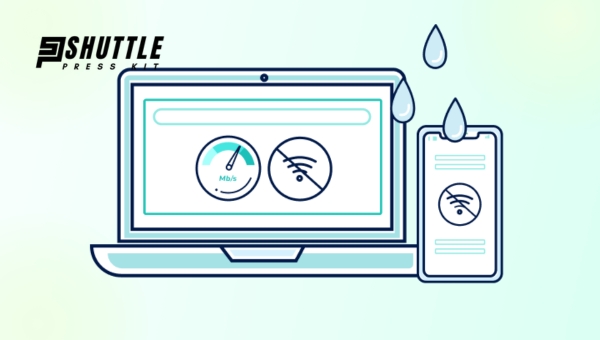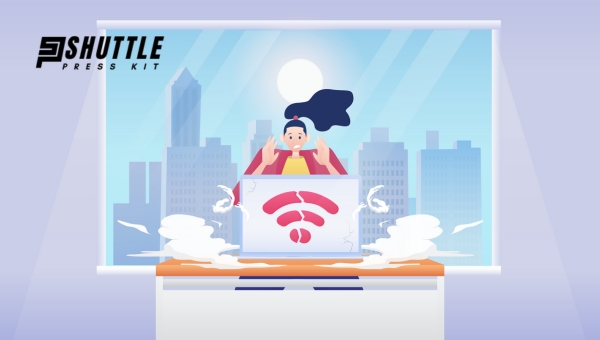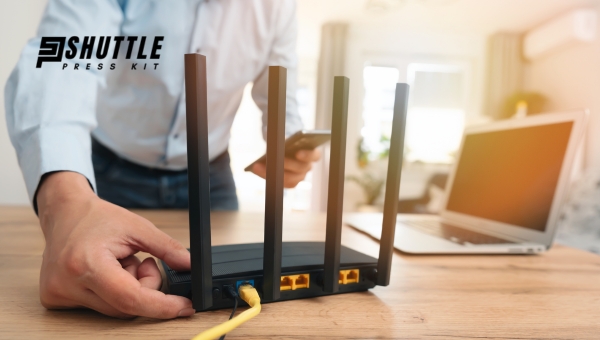Have you ever wondered why your internet speed slows down or disconnects during bad weather? If so, you’re not alone. Many people find that their internet service isn’t as reliable when the weather takes a turn for the worse. In this blog post, I will dive into how Weather Affect Internet Service and what you can do about it. Stay tuned to uncover some surprising facts!
Rain, snow, strong winds, and extreme heat can negatively impact your internet service. For example, heavy rain can interfere with the signal transmission of satellite and wireless connections, leading to slower speeds or loss of connectivity. Similarly, high winds might damage infrastructure like cables and antennas. On hot days, equipment might overheat and perform less efficiently. Each weather condition plays a role in how well our internet works daily.
Does Weather Affect Your Internet Connection?
Yes, weather can indeed impact your internet connection. Wireless internet relies on ultrasonic waves transmitted between devices and receivers like cell towers or satellites. Ideal transmission requires a clear, unobstructed path.

However, real-world obstacles such as buildings, trees, and especially severe weather conditions often disrupt this ideal scenario.
Heavy rain, dense fog, and significant cloud cover can scatter these waves. This scattering disrupts the signal’s strength and integrity as it travels to your device, leading to slower speeds or connection loss.
When bad weather interferes with the wireless signals reaching your devices, the system may need to resend data packets to ensure accurate communication. This redundancy can further slow down your connection or result in intermittent service disruptions.
While technology constantly evolves to mitigate these issues, current wireless systems remain susceptible to environmental factors that break or deflect their signals during adverse weather conditions.
Also Read: Starlink Volcano Mount Guide: Easy DIY Installation Tips
Understanding How Weather Affects Internet Performance
Weather conditions can significantly influence the quality and reliability of your internet connection. From physical damage to infrastructure to the absorption of wireless signals by rain, various weather phenomena can result in slower speeds, dropped connections, and reduced overall service reliability.

Here’s a concise overview of key points explaining how different weather conditions impact internet service:
- Physical Infrastructure Damage: High winds, ice, and heavy snowfall can physically damage cables and networking hardware. This is more common in areas with overhead cables or outdated infrastructure not designed to withstand severe weather.
- Water Infiltration: Rainwater or melting snow infiltrating electrical connections can disrupt signal transmission. This often leads to intermittent service or complete outages until repairs are made.
- Signal Interference: Wireless signals (including WiFi and mobile data) can be absorbed or scattered by water droplets in the air during rainstorms, reducing signal strength and range which affects speed and reliability.
- Susceptibility of Connection Types: Traditional copper wire connections (e.g., DSL) are more susceptible to weather-related disruptions due to their conductivity. Water exposure can degrade these signals more than those transmitted over fiber-optic lines.
- Increased Internet Demand During Bad Weather: Adverse weather conditions tend to keep people indoors, leading to higher usage rates which strain networks and reduce available bandwidth for each user.
Understanding these factors allows users to better diagnose potential reasons behind internet service disruptions during bad weather events, potentially mitigating frustration with unexpected drops in service quality.
Impact of Severe Heat on WiFi Performance
High temperatures can adversely affect WiFi routers and modems, leading to degraded internet connectivity. These devices are prone to overheating during extreme heat conditions, which can cause performance issues, connection instability, or even hardware failure.

Here’s a concise guide on how severe heat influences WiFi and the steps to mitigate those effects:
- Overheating Devices: WiFi routers and modems can overheat in high temperatures, reducing their operational efficiency or causing them to fail.
- Signal Interference: Heat can exacerbate signal interference, diminishing the range and speed of your WiFi connection.
- Infrastructure Damage: The infrastructure supporting your internet service (like cables and wireless towers) might also be negatively impacted by excessive heat.
To counteract these challenges:
- Ensure Good Ventilation: Place your router in an area with adequate airflow to prevent heat build-up.
- Avoid Direct Sunlight: Keep the device out of direct sunlight and away from other appliances that generate heat.
- Use Cooling Solutions: Implement additional cooling methods such as fans or USB-powered coolers for critical equipment.
- Regularly Power Off Devices: Periodically turn off your router to allow it to cool down, especially if it seems excessively warm.
Being mindful of these factors will help maintain optimal WiFi performance even during periods of extreme temperature.
Also Read: Starlink vs HughesNet: Which Wins the Satellite Battle?
Impact of Rain on Broadband Connectivity
Rain can indeed influence broadband internet performance, primarily through its interaction with the physical infrastructure of the network. Depending on the network’s resilience and the severity of weather conditions,

users might experience varying degrees of service disruption. Below are key points outlining how rain affects broadband connections:
- Water-induced Damage: Heavy rainfall can lead to water seeping into cables and equipment, potentially causing signal degradation or outages. This is more common with aging infrastructure.
- Signal Attenuation: In cases where broadband relies on over-the-air transmission methods (like satellite), heavy rain can absorb and scatter the signals, leading to reduced signal strength and slower speeds.
- Equipment Malfunction: Moisture and direct water exposure can cause short circuits in outdoor equipment such as routers and external receivers, leading to temporary or permanent damage.
Understanding these factors can help users anticipate possible disruptions during adverse weather conditions and seek appropriate measures to mitigate impact on their internet connection.
Also Read: Low Capacity vs High Capacity Starlink: Optimize Your Choices
Impact of Cold Weather on Broadband Connections
The performance and reliability of broadband internet connections can be influenced by a range of weather conditions, including cold weather. While not as directly impactful as other elements like rain or storms, cold temperatures can still pose challenges to maintaining a stable and speedy online connection.

Below are key ways through which cold weather might affect broadband services:
- Equipment Damage from Freezing: Networking gear exposed to the elements could accumulate moisture, which freezes in low temperatures. This expansion from freezing can damage internal components.
- Performance Issues in Electronics: The electronic components within networking devices are subject to slowed operations or reduced efficiency due to extreme cold, potentially degrading signal strength and processing speed.
- Physical Cable Stress: Cables that provide internet connectivity, whether they’re fiber-optic or copper-based, can experience increased brittleness in cold conditions. This makes them more prone to breaking or suffering damage during maintenance or environmental stress like heavy ice accumulation.
Understanding these potential impacts is crucial for troubleshooting connection issues during colder months and for providers working on improving service reliability regardless of weather conditions.
Also Read: Starlink Dimensions Simplified: Nail Your Satellite Setup
Frequently Asked Questions
Can bad weather disrupt my internet connection?
Yes, severe conditions like heavy rain, strong winds, and lightning can impact the performance or completely interrupt your internet service.
Why does my internet slow down during a storm?
Storms can damage the infrastructure that supports your internet, like cables and satellite dishes, leading to slower speeds or loss of connection.
Does snow affect Wi-Fi signals?
While snow itself doesn’t notably weaken Wi-Fi signals, the accumulation of snow on cables and antennas can reduce signal strength and internet speed.
Is Satellite internet more vulnerable to weather disruptions?
Yes, satellite internet connections are particularly susceptible to weather conditions, as storms can block the signal path between your dish and the satellite
Conclusion
Weather significantly impacts internet service quality, affecting both wired and wireless connections. Severe weather conditions, such as heavy rain, storms, and extreme cold, can physically damage infrastructure like cables and satellites, leading to disruptions in service. Additionally, atmospheric conditions can interfere with the signal transmission, especially in wireless networks, causing slower speeds or loss of connectivity.
While providers continuously work to mitigate these effects through robust infrastructure and advanced technologies, some disturbances are inevitable given the current limitations of technology. Understanding these challenges is crucial for both users and providers in managing expectations and planning for contingencies.
